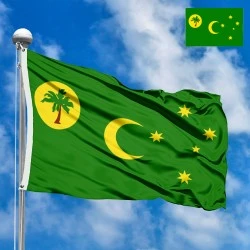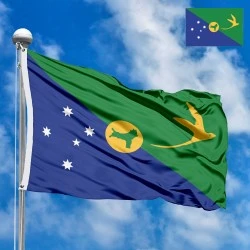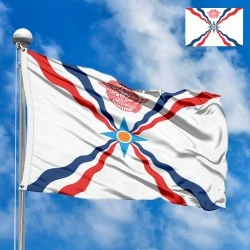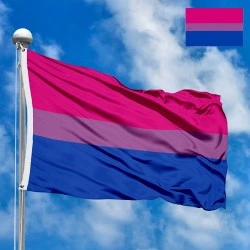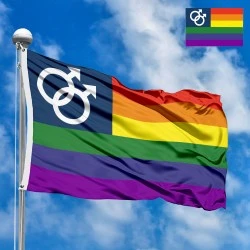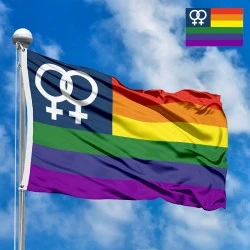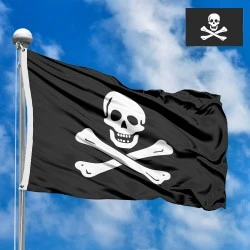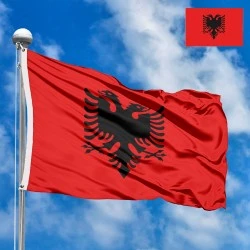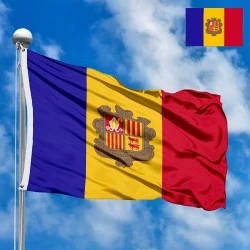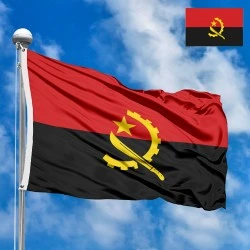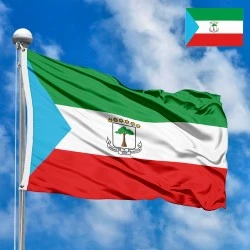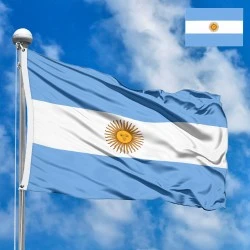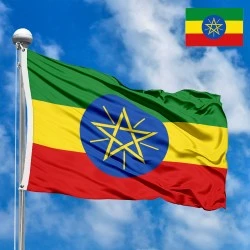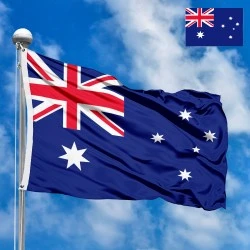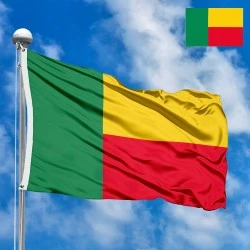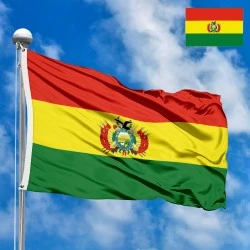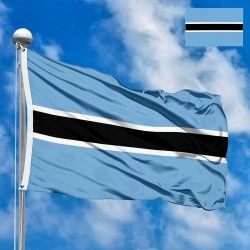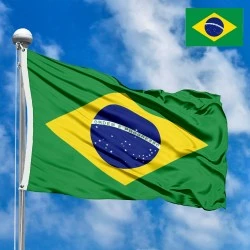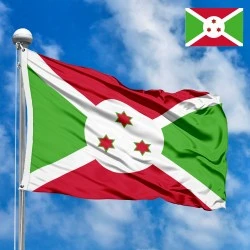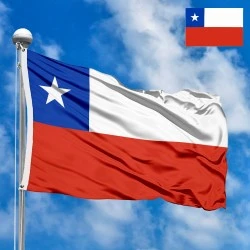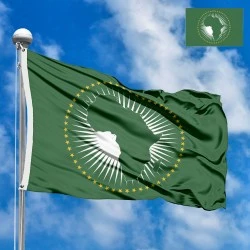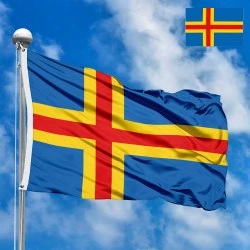Flag of Australia
- Flag Type: State
- Proportions (official): 1:2
- Official name: Commonwealth of Australia
- Local name: Australia
- Sovereignty (year): YES (1901)
- Member of Organizations: UN, Commonwealth of Nations, Pacific Community
- Country code, territory: AU, AUS, 036
- Capital: Canberra
- Large cities: Sydney, Melbourne, Brisbane, Perth
- Population: 26,900,000 (2024, estimate)
- Religions: Christianity ~44%, Irreligious ~39%
- Area (km²): 7 692 024
- Highest point: Mount Kosciuszko (2,228 m)
- Lowest point: Lake Eyre (-15 m)
- Currency: Australian dollar (AUD, A$)
- Languages: English
- Dialing code: +61
- National domain: .au
Flag Information
General information
Demography and Culture
Economy and communications
- All Flags
- Flags of Countries by Continent
-
Flags of Organizations
- Flags of UN countries
- Flags of the European Union countries
- Flags of NATO countries
- Flags of the countries of the Organization of Islamic Cooperation
- Flags of the countries of the Organization of American States
- Flags of the Arab League countries
- Flags of the African Union countries
- Flags of the countries of the Union of South American Nations
- Flags of the Commonwealth of Nations
- Flags of the countries of the Secretariat of the Pacific Community
- Flags of the Nordic Council countries
- Flags of the Caribbean Community
- Flags of the countries of the Association of Southeast Asian Nations
- Flags of the East African Community
- Flags of the countries of the Organization of Turkic States
- LGBT Community Flags
- Historical Flags
- Ethnic Flags
- Flags of the USA (states)
Description
The Australian National Flag is a profound symbol of the nation's history, its unique geography, and its political foundation. While a subject of ongoing debate for some, for the majority of Australians, it is a source of national pride and a powerful representation of their identity. The flag’s design, chosen in a national competition following the federation of the colonies, tells a story of heritage, unity, and location.
Design and Symbolism
The Australian flag features a deep blue field with three main elements: the Union Jack, the Commonwealth Star, and the Southern Cross.
-
The Union Jack: Situated in the upper left corner (the canton), the Union Jack symbolizes Australia's historical links to the United Kingdom. It represents the country's foundation as a collection of six British colonies and its heritage as a constitutional monarchy. This element connects Australia to a legacy of parliamentary democracy and the Westminster system of government.
-
The Commonwealth Star: Directly below the Union Jack is a large white seven-pointed star. This is the Commonwealth Star, also known as the Federation Star. The seven points are a symbol of the federation of Australia, representing the six original states (New South Wales, Queensland, Victoria, Tasmania, South Australia, and Western Australia) and the seventh point symbolizing all of Australia’s territories. The equal length of the points signifies the equality of these states and territories.
-
The Southern Cross: The right half of the flag (the fly) is dominated by a representation of the Southern Cross constellation. This constellation is a prominent and easily recognizable feature of the southern hemisphere night sky and has been a symbol of Australia since the early colonial era. It consists of four larger, seven-pointed stars and one smaller, five-pointed star. This element powerfully grounds the flag in its geographical location, symbolizing Australia's place in the southern part of the world.
History and Adoption
The Australian flag was the result of a nationwide design competition held in 1901, following the federation of the six colonies into the Commonwealth of Australia. The competition received more than 32,000 entries. The winning design was a collaboration of five nearly identical submissions, and their designers shared the prize money. The flag was first flown on September 3, 1901, at the Royal Exhibition Building in Melbourne.
The design underwent a few minor changes over the years, most notably regarding the number of points on the Commonwealth Star. Initially, it had six points, but a seventh was added in 1908 to represent the territories. The current design was officially recognized by legislation when the Flags Act 1953 was signed into law, and it was formally proclaimed by Queen Elizabeth II in 1954.
Flag Size and Proportions
The official ratio of the Australian National Flag is 1:2 (height to width). The dimensions of the elements are strictly defined to ensure a consistent appearance. The Union Jack occupies a quarter of the flag's area. The Commonwealth Star is positioned below it, and the Southern Cross is centered on the fly.
The Country, Region, and Meaning for Residents
Australia is a sovereign country and the world's sixth-largest by total area. It is a continent-country and the largest nation in Oceania. Its history is marked by the unique story of its Indigenous peoples, the arrival of British settlers, the federation of the colonies, and its evolution into a multicultural nation.
For many Australians, the flag is a beloved symbol of their country, its freedoms, and its democratic values. It represents their shared history and identity. However, the flag's design has been a source of significant debate. For many Indigenous Australians and others, the inclusion of the Union Jack is seen as a painful reminder of British colonization, which led to dispossession and a tragic history for Aboriginal and Torres Strait Islander peoples. This has led to calls for a new flag that better represents Australia's multicultural society and its indigenous heritage, such as incorporating the Indigenous Australian flag colors. The debate continues, highlighting the diverse perspectives on national identity within the country.
Interesting Facts
-
The flag was initially flown alongside the British Red Ensign, and the Blue Ensign was reserved for government use.
-
There are two other official flags of Australia: the Australian Aboriginal Flag and the Torres Strait Islander Flag, both of which hold special recognition and significance.
-
The flag is one of only two national flags (the other being Tuvalu) that still incorporates the Union Jack as a prominent feature, despite being a fully sovereign nation.
The Australian flag stands as a complex and layered symbol, a visual testament to a rich, and at times controversial, history that continues to shape the nation's identity today.
In the demonstration images, full-size flags are shown with proportions of 2:3, and hand-held flags with proportions of 1:2.
Donation
Download
Completely free for commercial and non-commercial use (public domain).
You can freely use them in your news magazines, websites, software, mobile applications.
We appreciate a backlink to https://flagssite.com
Raster files - Flag of Australia (PNG, JPG)
 Waving flag
Waving flag
- PNG format (transparent background), 72dpi, dimensions in Pixels (px), aspect ratio 3:4.
- 15х20 px
- 30х40 px
- 60х80 px
- 120x160 px
- 240x320 px
 Sizes:
Sizes:
"v15" - image size (by height); if necessary, replace with available: v15, v30, v60, v120, v240.
!!! For resizing, use the Latin (eng) keyboard layout.
<img src="https://flagssite.com/flags/v15/20701.png" alt="Flag of Australia">
 Round flag
Round flag
- PNG format (transparent background), 72dpi, dimensions in Pixels (px), aspect ratio 1:1.
"d15" - image size (diameter); if necessary, replace with available: d15, d30, d60, d120, d240.
!!! For resizing, use the Latin (eng) keyboard layout.
<img src="https://flagssite.com/flags/d15/20701.png" alt="Flag of Australia">
 Rectangular flag 2:3
Rectangular flag 2:3
- JPG format, 72dpi, dimensions in Pixels (px), aspect ratio 2:3.
"h30" - image size (by height); if necessary, replace with available: h15, h30, h60, h120, h240, h360, h480.
!!! For resizing, use the Latin (eng) keyboard layout.
<img src="https://flagssite.com/flags/h30/20701.jpg" alt="Flag of Australia">

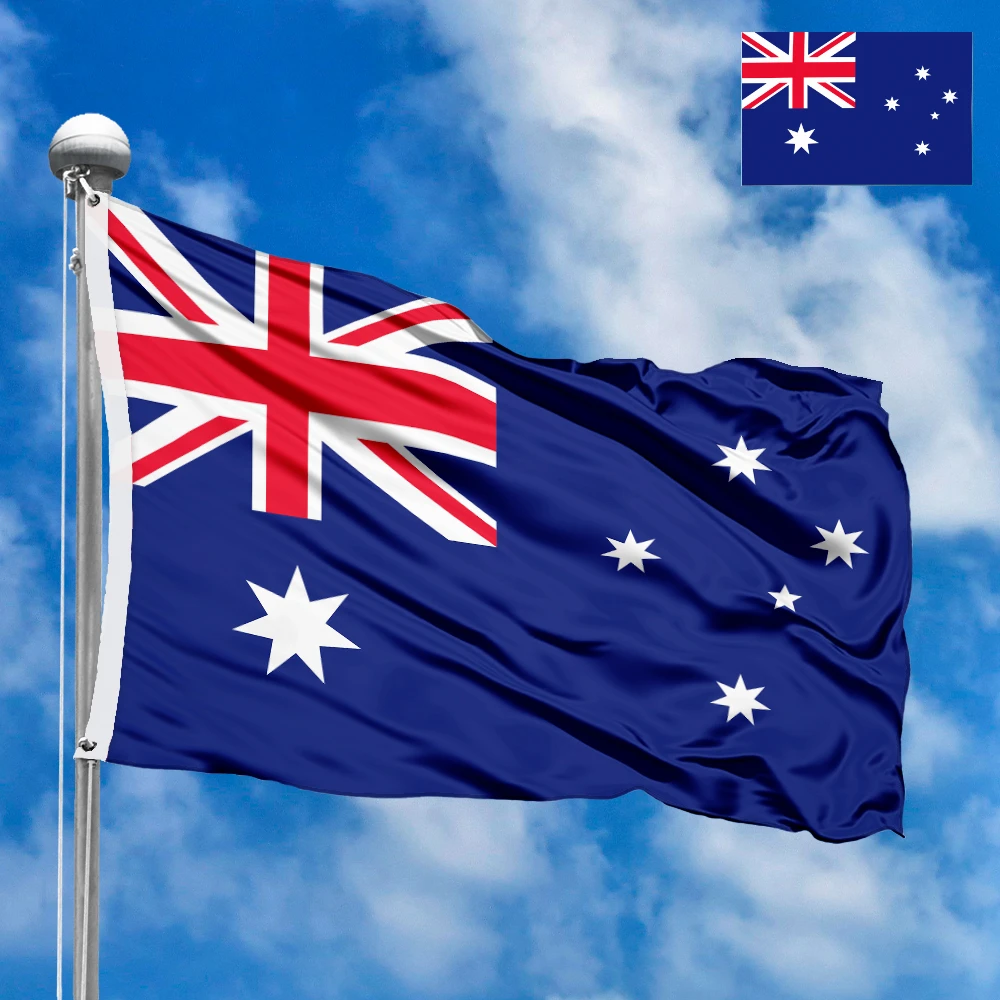
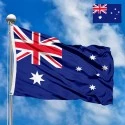
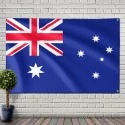
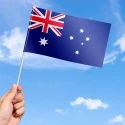

 Sizes:
Sizes:
 Sizes:
Sizes:
